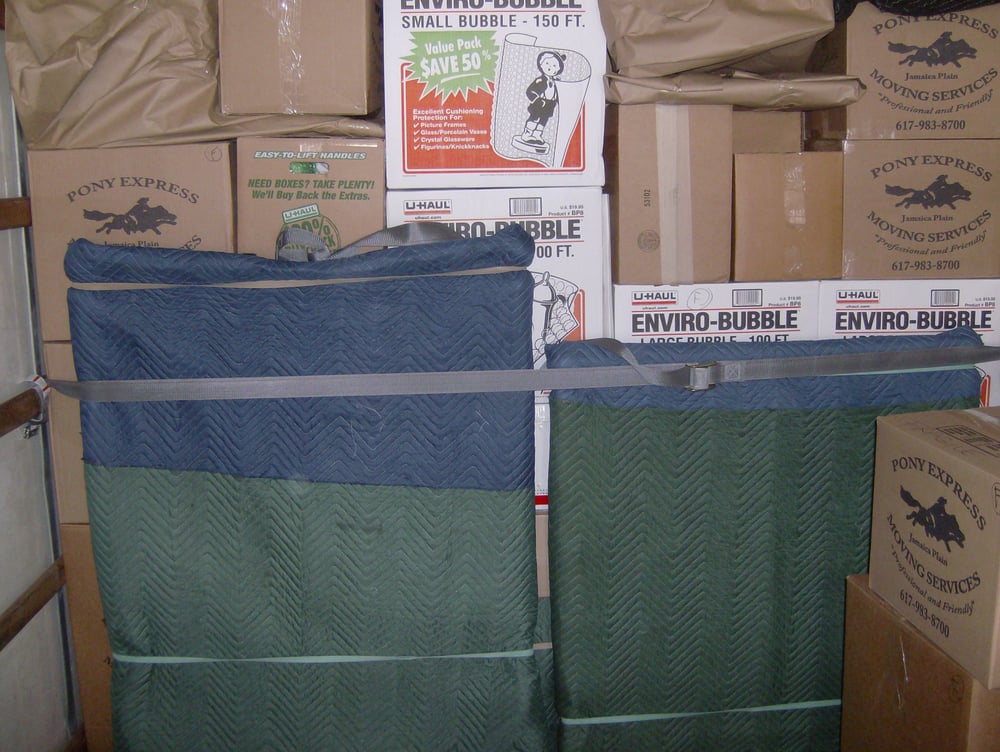
Want to know how to load a moving truck the professional way?
Yes, there are an infinite number of ways to pack a moving truck. Much of it is common sense. But the purpose of this blog post is to provide some serious step-by-step guidelines to load a moving truck properly. The information you need to know is segmented into three parts: general guidelines for packing furniture and the equipment you’ll need; packing specific furniture pieces; and step-by-step packing the truck.
General Guidelines
- Safety first! Any moving truck you rent will have a ramp and you need to make sure it’s fully engaged, clean of debris and dry, and covered with non-stick matting if necessary
- During the loading process, ensure the weight of all items is distributed evenly from front to back and side to side
- The truck should be loaded in layers, each self-contained and independently secured. The goal of any layer is to avoid hitting or rubbing into an adjacent layer
- All furniture should have blanket pads draped over exposed surfaces. The majority of damage done to items is by them rubbing against each other during transport. For added protection, use Plastic wrap in addition to blankets for fragile or hard to move items
- If your truck is too big for your items, ensure each piece of furniture is strapped independently to the back or side wall of the truck with blanket pads protecting exposed surface areas.
Packing specific furniture pieces
The following items have been singled out as the common household pieces that require special attention.
- Aquariums should be emptied with pads placed inside and out and then stretch wrapped. Place them on top of a box
- Bed frames should be strapped toward the back of the truck
- Chairs should have legs individually wrapped or bubble taped before wrapping the entire chair
- Couches should be loaded on top of a blanket pad, on the floor of a truck, with the feet faced toward the side wall and the back faces out to protect incoming items
- Drawers should be loaded faced toward the side wall to ensure they do not fall out during transport. All loose drawers should be secured with rubber bands
- Grandfather clocks. Remove weights from inside the clock. Wrap and label pendulums. Wrap the clock in plastic or blanket pads
- Hide-A-Beds should be secured using a strap so the metal insert doesn’t prop open during transport
- Metal should not be loaded close to furniture as it has the potential to tear through plastic wrap during transport
- Mirrors and glass should be wrapped and put between the mattress and box spring and strapped in
- Wooden furniture should be wrapped well with plastic wrap, paying close attention to the edges and sides. This is especially important for cherry oak wood!
- Rugs should be rolled up and taped
- TV’s should be wrapped and faced against a box and strapped. Flat screen TVs should never sit sideways or on their backs.
How to load a moving truck
- Your boxes will be your first layer, stacked high against the back wall of the truck to maximize space. Load the heaviest boxes on the bottom. Stack vertically with the lightest, most fragile on top
- Lay a blanket pad on the floor and load mattresses and box springs next. Stand them vertically. Loose glass pieces should be placed in between (as per above). Strap to the side wall. This, with your boxes is the first layer
- Next, lay another blanket pad on the floor and load couches vertically with feet toward the side wall, pillows removed. Secure each couch by straps to the side wall. Pillows can fill the empty space. Furniture pieces, such as dressers can be placed in between with blanket pads draped over.
- The next layer is more furniture, covered in pads and/or plastic and secured to the side wall when complete
- Appliances and wardrobe boxes are loaded last and will be the first items off the truck.
Ensure you close the back of the truck properly, replace the ramp securely and push safety pins into place. Happy Moving!


